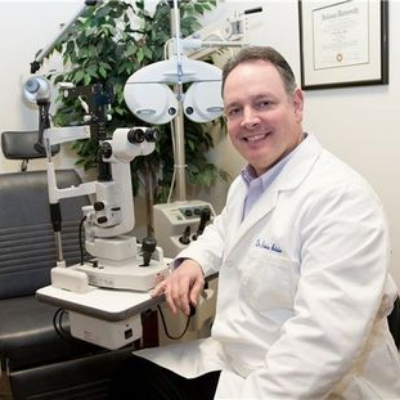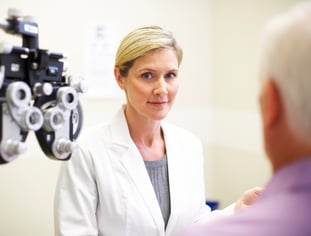Check Out Advanced Providers at Opticore Optometry for Eye Wellness
Checking Out the current Technological Developments in Optometry and What They Mean for Optometrists
In the ever-evolving area of optometry, recent technical developments are reshaping exactly how practitioners come close to eye care. From the precision of Optical Comprehensibility Tomography to the nuanced understandings provided by AI-driven diagnostic devices, these developments are establishing new standards in individual assessment and therapy. Teleoptometry is positioned to redefine availability, guaranteeing that knowledge goes beyond geographical constraints. As these advancements penetrate the practice, optometrists are faced with the difficulty of welcoming these tools to enhance individual results. Yet, the inquiry continues to be: exactly how will these technical shifts redefine the duties and responsibilities within the occupation?
Developments in Diagnostic Tools
Progressing the area of optometry, advancements in diagnostic tools have actually reinvented the means eye care professionals analyze and diagnose aesthetic disabilities and ocular problems. The past decade has actually experienced substantial technical improvements, allowing even more detailed and exact assessments.
One more trick innovation is the intro of innovative corneal topography systems, which map the surface curvature of the cornea with precision. These tools are especially valuable for fitting contact lenses and diagnosing corneal problems. Electronic retinal imaging has changed traditional ophthalmoscopy, offering in-depth, breathtaking views of the retina that help with detailed visual evaluations.
The development of wavefront aberrometry has additionally been important, allowing the evaluation of refractive errors with unrivaled accuracy (Eye Doctor Optometrist). This modern technology helps in personalizing restorative lenses and improving surgical results for refractive surgical procedures. Jointly, these analysis developments encourage eye doctors to supply remarkable patient care, guaranteeing early intervention and customized treatment strategies, ultimately enhancing aesthetic wellness outcomes
AI in Person Monitoring
Building on the structure of innovative analysis devices, the consolidation of artificial knowledge (AI) in client monitoring represents a transformative leap for optometry. AI systems are progressively utilized to enhance efficiency, precision, and personalization in person care.
Furthermore, AI-driven systems facilitate streamlined individual communications and administrative processes. Automated scheduling, virtual appointments, and customized follow-up strategies not only boost individual satisfaction yet likewise enhance time administration for professionals. These systems can triage individuals based on the urgency of their conditions, making sure that those in crucial demand get prompt attention.
Moreover, AI boosts decision-making by providing optometrists with evidence-based referrals and therapy pathways. By integrating information from digital health records, AI devices supply understandings that inform clinical decisions, lowering the threat of errors and enhancing person outcomes. As AI remains to evolve, its function in person monitoring will likely expand, reshaping the landscape of optometric care.
Advances in Retinal Imaging
In the world of optometry, retinal imaging has actually seen exceptional technical advancements that are improving analysis abilities and patient treatment. Technologies such as Optical Comprehensibility Tomography (OCT) and fundus digital photography have changed how optometrists visualize and assess the retina. OCT, in particular, supplies high-resolution, cross-sectional pictures of the retina, permitting the comprehensive evaluation of its layers. This ability is invaluable for very early detection and administration of problems like glaucoma, diabetic person retinopathy, and age-related macular deterioration.
Boosted imaging methods like OCT angiography are additional refining analysis accuracy. This non-invasive technique maps blood circulation in the retina, using critical insights right into vascular health without the requirement for dye injections. In addition, flexible optics innovation is being integrated into retinal imaging systems to correct eye aberrations, delivering extraordinary photo clarity. Such improvements assist in the identification of min retinal changes that might indicate illness development.
Furthermore, improvements in artificial intelligence are that site increasing retinal imaging by enabling automatic evaluation of huge datasets. These systems assist eye doctors in identifying patterns a sign of pathology, therefore boosting analysis precision and performance. Collectively, these developments are transforming retinal imaging right into a cornerstone of modern eye treatment, improving results and broadening restorative opportunities.
Teleoptometry's Growing Role
Teleoptometry is progressively ending up being a crucial element of eye treatment, driven by innovations in electronic communication and analysis devices. This is especially useful in rural and underserved areas where accessibility to specialized eye care is often limited.
The assimilation of fabricated knowledge (AI) further improves teleoptometry, making it possible for the evaluation of visual information and helping in the detection of ocular problems such as glaucoma and diabetic retinopathy. AI-powered formulas can quickly interpret intricate imaging data, giving eye doctors with beneficial understandings that bolster clinical decision-making.
Furthermore, teleoptometry supports connection of care via smooth assimilation with electronic wellness records (EHRs), permitting optometrists to maintain comprehensive person backgrounds. When consulting with different experts., this makes sure that people receive customized and consistent treatment also.
In spite of these benefits, difficulties continue to be, consisting of ensuring data safety and security and handling client expectations. However, teleoptometry stands for a substantial stride in the direction of even more available, efficient, and patient-centered eye care. As technology evolves, its duty is positioned to expand even more.

Future Trends in Eye Treatment
A myriad of ingenious fads is set to improve the future of eye care, driven by technological developments and the developing requirements of individuals. One considerable trend is the assimilation of man-made intelligence (AI) in diagnostics, which assures to improve the accuracy and efficiency of eye assessments. AI formulas can evaluate large amounts of information from retinal pictures, potentially spotting problems look these up like diabetic retinopathy and glaucoma earlier than conventional approaches.
Moreover, individualized medicine is obtaining grip in optometry, with genetic testing informing customized therapy plans. This method intends to optimize patient outcomes by customizing treatments to private genetic profiles. Wearable technology, such as wise get in touch with lenses, is additionally on the perspective, providing real-time monitoring of intraocular stress or glucose degrees, therefore offering continual insights right into systemic and eye see wellness.
The adoption of enhanced truth (AR) and virtual reality (VIRTUAL REALITY) in training and individual education and learning is one more arising trend. These modern technologies provide immersive experiences that can boost understanding and skills both for individuals and optometrists. As these fads progress, eye doctors have to remain abreast of technical improvements to give advanced treatment, making sure improved client end results and contentment in the dynamic landscape of eye treatment.
Conclusion

Collectively, these analysis developments encourage eye doctors to deliver remarkable client care, ensuring very early intervention and customized therapy approaches, eventually improving visual wellness outcomes.

As these modern technologies proceed to evolve, optometrists need to adjust and integrate them into method, inevitably optimizing process efficiency and raising the criterion of eye care delivered to clients.